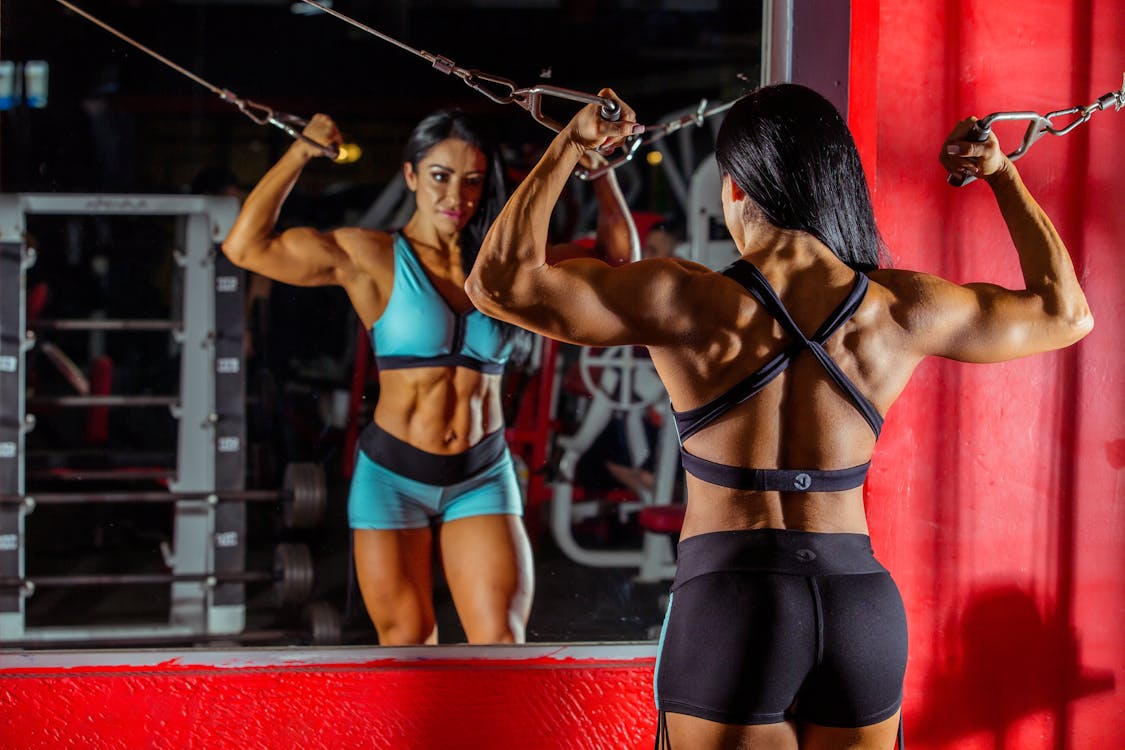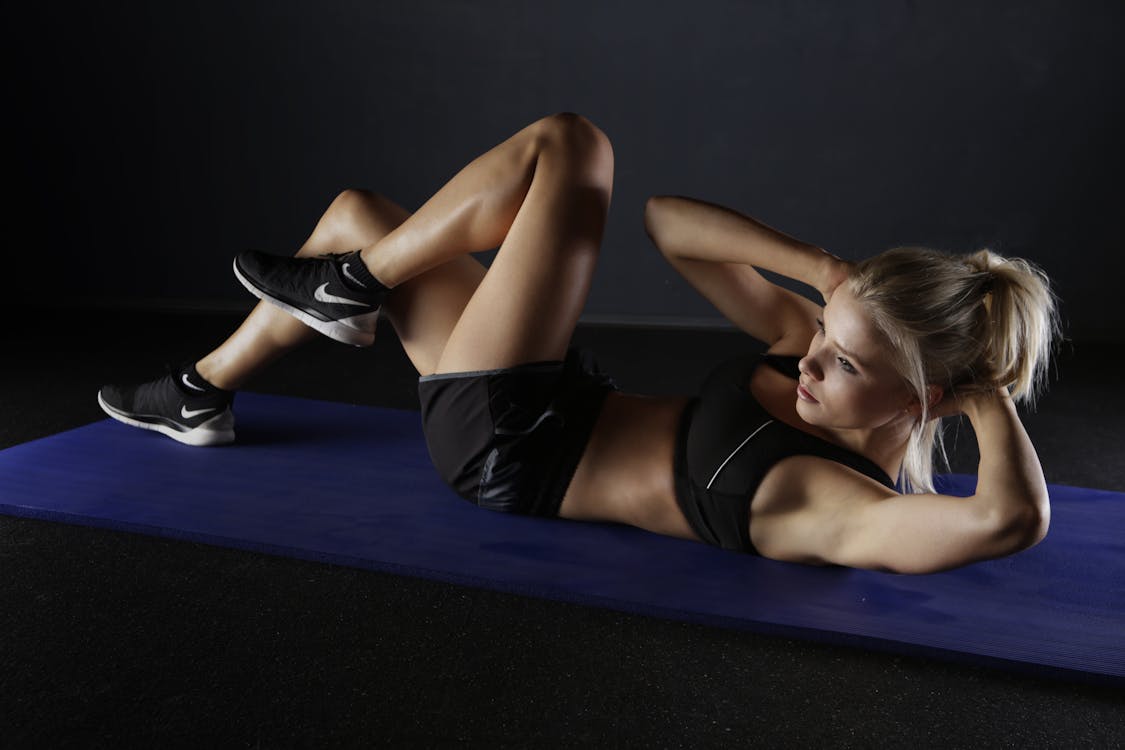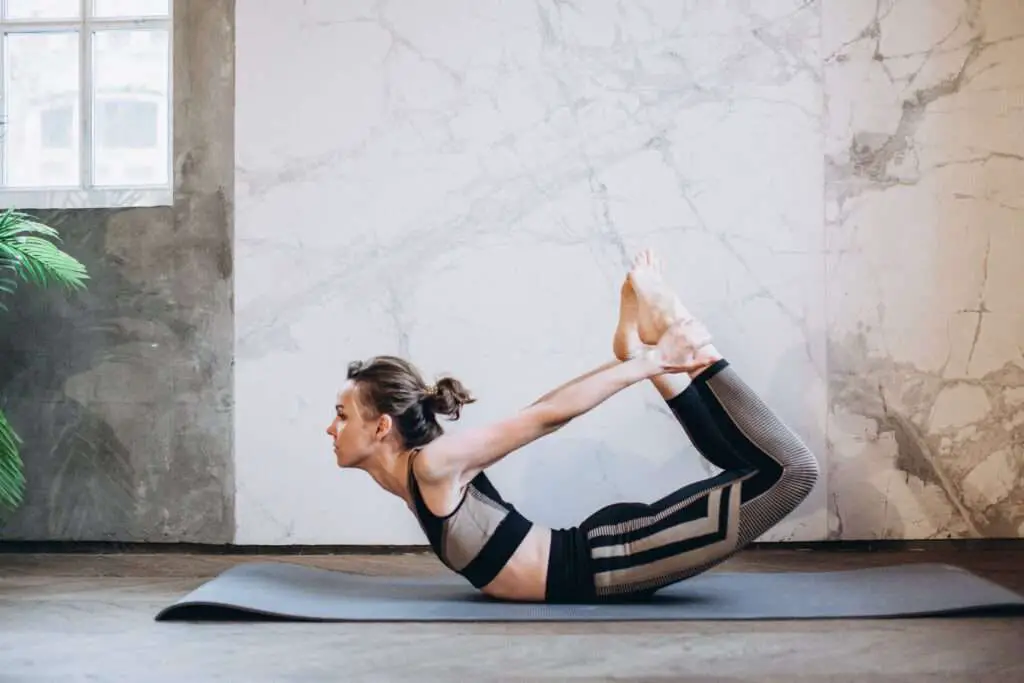Are you looking for a low-impact exercise that can help you build muscle and improve your overall fitness? Look no further than Pilates for muscle building.
Pilates is a popular form of exercise that targets improving core strength, flexibility, and overall body awareness. Is that Pilates also effective for muscle building? The answer will be yes, with some caution.
First, it’s essential to understand what is making you build muscle. Muscle building, also called hypertrophy, is increasing the size and strength of skeletal muscles through exercise and nutrition. Resistance training, weightlifting, or bodyweight exercises is also the most effective way to stimulate muscle growth. Progressive overload, or gradually increasing the intensity or weight of your workouts over time, is also a critical factor in muscle building.
So, how does Pilates fit into the equation? While Pilates may not be the first exercise that comes to our mind when thinking about building muscle. It can be helpful in a few ways.

Pilates can help with muscle building through resistance bands, weights, and other props. Pilates exercises can incorporate these tools to increase resistance and create muscle tension, stimulating muscle growth. For example, using a resistance band during a Pilates exercise can provide an additional challenge for the muscles being worked, leading to increased strength and size over time.
Another way Pilates can contribute to muscle building is through specific exercises that target different muscle groups. Pilates exercises can be designed to work specific muscle groups, such as the arms, legs, glutes, and back. Pilates can contribute to muscle growth and increased strength by targeting these muscles with resistance and progressive overload.
In addition, Pilates can improve muscle endurance, a crucial factor in muscle building. Muscle endurance is the ability of a muscle to perform repeated contractions over an extended period. By improving muscle endurance through Pilates, individuals can perform more reps or sets of exercises with heavier weights, leading to muscle growth over time.
While Pilates can be effective for muscle building, it’s important to remember that it may not be as effective as traditional weightlifting or bodybuilding for building muscle mass. Pilates tends to focus more on bodyweight exercises and low-impact movements, which may provide a different level of resistance or intensity than weightlifting. However, Pilates can still be a valuable addition to a muscle-building routine, particularly for individuals who prefer low-impact exercises or are new to resistance training.
To maximize the muscle-building benefits of Pilates, it’s also important to pair it with a healthy, balanced diet that includes adequate protein intake. Protein is essential for muscle growth and recovery, so consuming enough protein can help support muscle-building efforts. Additionally, consistency and frequency of Pilates practice are necessary for seeing results. Results may vary depending on different factors like fitness level, diet, and training frequency, it’s normally recommended to train in Pilates at least 2-3 times per week for good results.
Understanding Muscle Building:
Muscle building, or muscle hypertrophy, is increasing the size and strength of skeletal muscles through various forms of resistance training and proper nutrition. When exercise stresses power, tiny tears occur in the muscle fibers. The body responds by repairing and rebuilding these fibers, increasing muscle size and strength.
A consistent and progressive resistance training program is essential to achieve muscle building. This can involve using weights, resistance bands, bodyweight exercises, or other forms of resistance. The exercises should target specific muscle groups, and the opposition and intensity should gradually increase over time to continue challenging the muscles and promoting growth.

In addition to exercise, proper nutrition is also crucial for muscle building. Adequate protein intake is essential for muscle repair and growth, and a balanced diet with sufficient calories can provide the energy needed for intense workouts and muscle building.
While muscle building is often associated with bodybuilding and weightlifting, it can benefit individuals of all fitness levels and goals. Increased muscle strength and size can improve overall physical performance, prevent injury, and even aid in weight loss and metabolism.
Muscle building is a complex and ongoing process that requires consistent effort, patience, and attention to exercise and nutrition. With dedication and proper training, individuals can achieve their muscle-building goals and enjoy the benefits of increased strength and overall fitness.
Pilates for Muscle Building:
While Pilates may not be the first form of exercise that comes to mind when thinking about muscle building, it can be effective in several ways. Pilates exercises can incorporate resistance bands, weights, and other props to increase resistance and create muscle tension, stimulating muscle growth. Additionally, Pilates exercises can target specific muscle groups, such as the arms, legs, glutes, and back, with progressive overload to contribute to muscle growth and increased strength.
Pilates can also improve muscle endurance, essential for performing more reps or sets of exercises with heavier weights, leading to muscle growth over time. However, it’s important to note that Pilates may not be as effective as traditional weightlifting or bodybuilding for building muscle mass. To maximize the muscle-building benefits of Pilates, it’s essential to pair it with a healthy, balanced diet that includes adequate protein intake and practice Pilates at least 2-3 times per week for optimal results. Pilates can still be a valuable addition to a muscle-building routine, particularly for individuals who prefer low-impact exercises or are new to resistance training.
Comparing Pilates to Other Forms of Exercise:
Pilates is a unique form of exercise that focuses on building strength, improving flexibility, and promoting overall body awareness and control. While it may not be as well-known as other forms of exercise, such as weightlifting, running, or yoga, it has several distinct advantages and benefits.
Compared to weightlifting, Pilates is generally a lower-impact form of exercise, with a focus on controlled, precise movements rather than heavy lifting. This can be beneficial for individuals with joint pain or mobility limitations. Pilates also emphasizes core strength and stability, which can help prevent injury and improve posture.
Compared to running or other high-intensity cardio exercises, Pilates is a low-impact, whole-body workout that can improve overall strength and flexibility without putting excessive strain on the joints. It’s also an excellent option for individuals who prefer a slower-paced, mindful workout.

Compared to yoga, Pilates places a greater emphasis on strength and muscle activation while still promoting flexibility and relaxation. Pilates exercises can be modified and progressed to increase resistance and challenge the body, making it a versatile and adaptable form of exercise.
Overall, while Pilates may not be the best choice for every individual or fitness goal, it can be a valuable addition to a well-rounded exercise routine, offering unique benefits and advantages compared to other forms of exercise.
How Long Does it Take to See Results?
The timeline for seeing results from Pilates, or any form of exercise, can vary depending on various factors, including individual fitness level, exercise frequency and intensity, and nutrition. Generally, it can take several weeks or even months to see significant changes in muscle strength, tone, and overall body composition. However, many individuals may notice improvements in flexibility, posture, and energy levels within just a few sessions.
To see more significant results, it’s essential to practice Pilates consistently, ideally at least 2-3 times per week, and gradually increase your exercise intensity and resistance over time. Additionally, nutrition plays a crucial role in muscle building and overall fitness, so maintaining a balanced, healthy diet with adequate protein intake can also contribute to seeing results more quickly.
It’s also important to note that results from Pilates can be more subtle compared to other forms of exercise, such as weightlifting or high-intensity interval training. Rather than focusing on immediate changes in muscle size or strength, Pilates emphasizes overall body awareness, control, and alignment, which can have longer-term benefits for overall health and wellness. Therefore, while it may take some time to see visible changes, the holistic benefits of Pilates can be worth the wait.
Conclusion:
In conclusion, Pilates can be a valuable form of exercise for individuals looking to build muscle, improve strength and flexibility, and promote overall health and wellness. While it may not be the most well-known or traditional form of muscle building, Pilates offers unique advantages and benefits that can complement other forms of exercise or stand on their own.
Pilates exercises can target specific muscle groups, incorporate resistance and progressive overload, and improve muscle endurance, all of which contribute to muscle growth and increased strength. Additionally, Pilates emphasizes overall body awareness and control, which can help prevent injury, improve posture, and promote mind-body connection.
While it may take some time to see visible changes in muscle size or strength from Pilates, consistent practice and a healthy diet can contribute to seeing results more quickly. However, it’s important to remember that Pilates offers more than just muscle-building benefits, focusing on overall wellness and holistic body movement.
Overall, suppose as a standalone form of exercise or a complement to other workouts, Pilates can be a useful and enjoyable way to build muscle, improve fitness, and active overall health and wellness.



